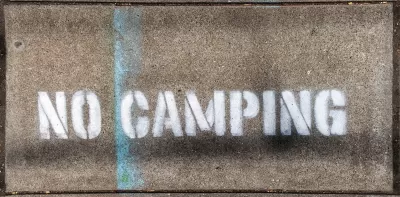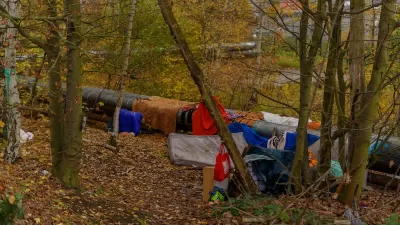Cities have access to tools that can more effectively capture information about unhoused residents and pinpoint what types of resources are needed and where.

The number of people experiencing homelessness is vastly undercounted by the official federal count, writes Tamera Kohler in an opinion piece for Governing — but cities can do better.
Kohler argues that there are existing tools and methods that can help cities more accurately understand the scale of the homelessness crisis. “Better yet, they can allow cities to identify every unhoused person by name, track their personal history with homelessness, and address their specific housing and health needs.”
According to Kohler, “The shortcomings of the point-in-time count are numerous; it simply can't encapsulate the complex and varied forces behind homelessness.” Unhoused people may not be sleeping outdoors every night, and punitive laws can push people to less visible places. In some cases, lack of access to certain properties (for example, San Diego advocates only started counting people on California Department of Transportation property in 2023) can make a major difference in the count. The challenges are often exacerbated in rural areas, where dispersed geography contributes to difficulty in accurately identifying unhoused residents.
Kohler recommends homeless management information systems (HMIS) as one tool for tracking people’s needs and interactions with local services. “An even more powerful way of using HMIS technology is creating by-name data — comprehensive data sets updated in real time that record each person's name, needs, circumstances and history with homelessness. By-name data empowers communities to coordinate personalized care and resources for individuals.”
FULL STORY: We Need Better Data to Combat Homelessness

Trump Administration Could Effectively End Housing Voucher Program
Federal officials are eyeing major cuts to the Section 8 program that helps millions of low-income households pay rent.

Planetizen Federal Action Tracker
A weekly monitor of how Trump’s orders and actions are impacting planners and planning in America.

The 120 Year Old Tiny Home Villages That Sheltered San Francisco’s Earthquake Refugees
More than a century ago, San Francisco mobilized to house thousands of residents displaced by the 1906 earthquake. Could their strategy offer a model for the present?

HSR Reaches Key Settlement in Northern California City
The state’s high-speed rail authority reached an agreement with Millbrae, a key city on the train’s proposed route to San Francisco.

Washington State Legislature Passes Parking Reform Bill
A bill that would limit parking requirements for new developments is headed to the governor’s desk.

Missouri Law Would Ban Protections for Housing Voucher Users
A state law seeks to overturn source-of-income discrimination bans passed by several Missouri cities.
Urban Design for Planners 1: Software Tools
This six-course series explores essential urban design concepts using open source software and equips planners with the tools they need to participate fully in the urban design process.
Planning for Universal Design
Learn the tools for implementing Universal Design in planning regulations.
Ada County Highway District
Clanton & Associates, Inc.
Jessamine County Fiscal Court
Institute for Housing and Urban Development Studies (IHS)
City of Grandview
Harvard GSD Executive Education
Toledo-Lucas County Plan Commissions
Salt Lake City
NYU Wagner Graduate School of Public Service





























